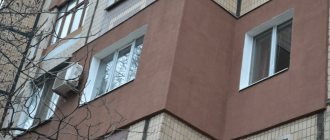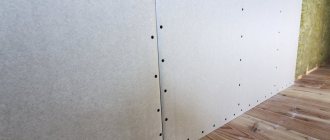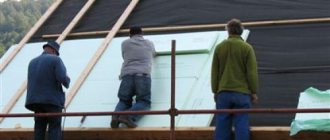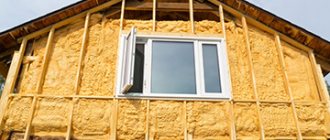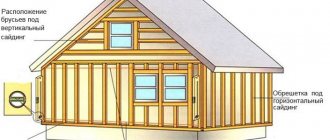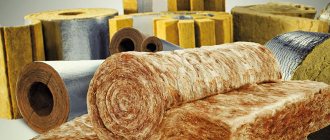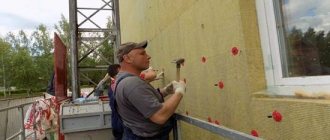Heating the wall is essential for creating a comfortable atmosphere in the house. In addition to general perimeter insulation work, carried out to protect against drafts and keep warm air inside, you should think about creating warm walls. This is especially true for country houses made of stone, brick, and concrete blocks. Heaters, wood stoves and gas stoves heat the air well, but the walls remain cold. Due to the difference in external and internal temperatures, condensation occurs on the walls - a harbinger of mold.
Mold on the wall should be removed immediately after it is discovered. The danger of these fungi lies in toxicity; the most common consequences of its activity are allergic diseases, chronic diseases of the respiratory system, and in severe cases, damage to the kidneys and liver.
Heated walls also contribute to the creation of an optimal microclimate. All heaters, with the exception of infrared ones, operate on the principle of convection. Cold air enters the heating surface; after heating, the air masses enter the upper layers of air. It turns out that the temperature at the top is always higher than at the bottom, but we walk on the floor, which remains the coldest zone. Underfloor heating systems help correct this situation, but they are not enough to heat the walls. Such heating systems are widely used for wall heating, and of all devices they are the only ones that can be used for this purpose.
The main advantages of wall heating:
- Eliminates fungus and mold
- Works in those areas that need heating and cannot be warmed up by a conventional heater
- Economical use
- Always fresh air without the effect of “burnt air” - the absence of convection does not allow dust to rise up and burn on the heating element
- Systems take up no space
The disadvantages of cable or film heating systems include the difficulty of repair and maintenance - after all, decorative finishes (wallpaper, plaster, tiles) are installed on them. Among the heated floor systems used to warm the walls, a distinction is made between electric and infrared heated systems.
- Electrical system “warm walls” - heating cables or mats
- Infrared system – heating film based on IR radiation.
Wall heating is most often carried out on external walls, and in a corner room on two walls. Furniture or household appliances should not be placed near these walls.
Pros of use
The advantages of wall heating are as follows. Thus, heat exchange is carried out due to radiation transmission - both people and animals feel comfortable when the temperature in the room becomes several degrees lower. Due to optimal fuel consumption for heating, it will be possible to save about 10% of energy resources in one season.
In addition, “warm walls” significantly reduce convective air flows in the room. Due to this, dust does not disperse into the air, and living conditions for those living in the house are improved - this is especially important for people with chronic respiratory diseases. Finally, to effectively operate a “warm wall” system, it will be necessary to install circulation pumps of lower power than in conventional heating systems.
Advantages and disadvantages of warm walls
Before moving on to directly listing the disadvantages of such systems, I immediately want to clarify the situation with their operating principle, which in itself is one big disadvantage. Most people know that heat in a room is distributed by convection or radiation. The essence of convection is that warm air immediately rises, and thermal radiation spreads from the heating device to a maximum of twenty centimeters, and then, again, the principle of air convection is activated.
Now think about what will happen to the heat in the case where the wall is one large heating element - absolutely right, a twenty-centimeter section of space next to the wall will warm up, then the heat will go up and will be under the ceiling, warming up the floor of the neighbors. In general, the situation is something like this: it’s cold above the floor, hot under the ceiling, and so-so in the middle. Do you think it would be comfortable to live in such a room? Naturally, not very much. You will say that there are still batteries? Yes, there is, but then the meaning of heating with a warm wall is lost as such - the only reasonable explanation that can be found for the use of this technology is pampering. You can, of course, use it to dry wet walls, but, again, it will be cheaper and easier to properly seal interpanel or interblock seams.
Water warm walls photo
Now, as for all the other disadvantages that infrared warm walls and all other heating systems for vertical surfaces in the house have. There are many of them, but we will focus exclusively on significant shortcomings.
- Furniture cannot be placed along the heated wall. Not only will it reduce the efficiency of heating the room, but also the furniture itself, under the influence of heat, will lose moisture and dry out. In such conditions it will not last long.
- Having installed a heated floor on the wall, you can’t expect to hang anything on it. Paintings, modern TVs, carpets - all this will become inaccessible to you for one simple reason: when installing fasteners, you will probably damage the heating elements. In principle, you can plan in advance what will hang and where, but in most cases our people think about it at the very last moment.
- Large heat losses. I won’t talk for a long time here, because everything is already clear - for the most part, the heating elements will heat the wall, and through it the heat will certainly begin to evaporate outside.
- Moreover, these heat losses lead to another, no less important negative point. Dew point - it moves inside the wall. In winter, moisture will accumulate there, or rather, condensation, which forms on the border between warm and cold. This moment has two unpleasant nuances - where it is warmer, all kinds of mold fungi will develop, and where it is very cold, the wall will freeze in winter. The result of freezing and thawing cycles will certainly be destruction.
Warm walls with your own hands photo
In general, if you have not yet decided to install warm walls, then at least do not rush with them - here you need to think carefully and weigh the pros and cons. Consult with specialists, with people who have already managed to try this heating technology and, if after this you are still confident in the need to heat the walls, then you can act.
Places of use
Heating installed in the walls belongs to radiant heat exchange systems, so it is recommended to install it in rooms with a minimum amount of furniture. The most optimal type of room for installing warm walls is as follows:
- rooms with a small amount of equipment and furniture - various offices, classrooms, bedrooms, corridors;
- premises in which there are no conditions for installing other heating systems: workshops, garages, bathrooms, swimming pools;
- rooms with high humidity, in which the use of water heated floors is ineffective due to the high heat consumption for evaporation - swimming pools, baths, saunas, bathrooms and laundries;
- any type of premises for which one type of heating is not enough.
Warm walls: what are they made of?
Anyone who is familiar with the principle of making heated floors will quickly understand that the technology for heating walls is completely identical to them - nothing new has been invented here. You could even say that, on the contrary, the warm walls, compared to the floors, have degraded somewhat. In most cases, material such as reflective thermal insulation is removed from the structure - with this formulation of the question, the heating element warms up the wall, and the heat goes outside. At the very least, this is incorrect - a heat insulator can only be installed if the walls are covered with plasterboard, which, as you understand, is not always advisable. Otherwise, this is the same technology for heating surfaces, which can be carried out in three ways, or rather, using three types of heating elements.
- Water warm walls. The optimal solution if your house or apartment has an individual liquid heating system.
- Electric warm walls are cables or ready-made mats, the energy consumption of which is quite high.
- Film heated floor on the wall - electric or infrared elements, which in this situation with walls can be called the most optimal solution, and then only when they are installed in a circle: on the ceiling, walls and floor.
Warm electric walls photo
In principle, regarding the question of what warm wall systems are made of, there is nothing more to add, except to mention small materials, without which not a single installation of such systems can be done. These are all kinds of fasteners, if their installation is possible, then insulation and the like.
Calculation
When considering heating installed in the walls of a private house, special attention is paid to the issue of the temperature range of the external walls of the building. If insulating layers are installed outside the house, the freezing point of the wall will move towards the insulation. Therefore, enclosing structures can be made of non-frost-resistant materials. The disadvantages of this method include an increase in energy costs - after all, heating will affect not only the internal walls, but also the enclosing structures.
You can place the insulation on the side of the room. In this case, the freezing point will shift inward. Therefore, the walls need to be insulated with frost-resistant material - otherwise they may freeze through and condensation will appear on them. The same problems arise when installing warm walls without the use of insulation.
Erroneous estimates of wall thickness and miscalculations in design can lead to significant heat loss.
Areas of application of warm walls
Warm walls are used not only in residential premises, but are also suitable for swimming pools, baths, toilets and saunas. It is quite possible to place the heating systems described above in office premises, as well as even workshops and garages.
Video “All about types of warm walls”
Detailed description of the types of warm walls. Analysis of the advantages and disadvantages of each type.
We recommend that you read
Which heating radiators are best for an apartment: review of popular models 2021
Which heating batteries are best suited for a private home: a review of options
Which is better to choose insulation for walls - review of materials
Heating scheme
In general, the built-in heating diagram in the section of the wall looks like this:
The following materials are used:
- pipes with a diameter of 12-17 mm and steel clamping bars for pipes of this diameter;
- screws and dowels made of stainless steel;
- reinforcement or metal mesh, the cell size of which is about 50 mm;
- plaster with cement or lime plaster in the amount required to cover a thickness of about 10 mm above the mesh;
- thermal insulation boards - according to European energy saving requirements - 2 cm thick, thermal conductivity 2.0 m²/kW.
Installation instructions
To install warm walls, the surface of the walls themselves must first be carefully leveled. Before you begin installing the heating system, you need to provide places where electrical wiring and distribution boxes will be installed. The wiring itself is laid in the top layer of plaster only after the final installation of the wall pipeline.
Application of heat insulator
A layer of heat-insulating material of a high degree of rigidity is installed on the load-bearing wall. Typically, rigid foam insulation board with an adhesive surface is used for this purpose. This slab is laid on the wall surface from bottom to top. The edge insulation tape is then pulled between the wall and the floor surface.
Using dowels and screws, the main elements for installation are fixed - steel clamping bars. They need to be firmly attached to the load-bearing wall through the thickness of the insulating boards. The distance between each fixed tire should be no more than 1 meter.
Piping and finishing
Now let's lay the pipeline. In this case, it is necessary to carefully insulate the section of the pipeline running from the boiler to the wall to reduce heat loss. The installation of the pipe must begin from the floor surface at a given pitch.
After installing the system, it is covered with plaster. It is advisable to carry out this work in two stages. The first layer is applied to the reinforcement mesh frames. When this layer has hardened, a plaster mesh is attached to the wall and the final layer of plaster is applied.
If you plan to cover the wall with wallpaper, then you need to install a “strobe” grid on the final layer of plaster. It is impregnated with a special dispersion, which prevents the penetration of condensate and prevents cracks from appearing in the finishing layer.
The thickness of the entire plaster layer above the wall heating pipeline should not exceed 30 mm. The electrical wiring is carried out on completely dried plaster in compliance with all safety measures.
Examination
The supply of coolant to the wall pipeline is allowed only after the finishing plaster layer has completely dried.
It should be noted that the water flow speed in such a heating system must be at least 25 m/s - at a lower speed, air pockets may occur.
The control and triggering system must be designed to regulate either the water supply or the return.
Do-it-yourself warm walls: installation technology
It doesn’t matter what heating element we are talking about - the essence of warm wall technology does not change. The only difference between the various heating methods may lie only in the subtleties of mounting the heater - otherwise, this technology has a standard scheme, which can be represented as the following sequence of work.
- Installation and connection of heating elements. Everything here is standard - exactly the same as in heated floor technology. If pipelines act as heating elements, they are attached to the wall using special fastening strips or clips. An indispensable condition for the installation of warm water walls is the laying of pipes in a snake from the bottom up along the coolant flow - a spiral pipe laying pattern is not suitable here, since the coolant must rise up the walls not only through a pump, but also through natural circulation. When it comes to electrical cables, they are also secured mechanically. The mats are glued with a special cement-based glue, and as for all kinds of films, they require a smooth plastered surface - in most cases they are laid behind drywall or panels.
Installation of warm walls photo - Wall decoration. This point applies to a greater extent to electric cable heating elements and pipelines. With films everything is much simpler - they are glued to the wall between the fastening of the frame, which is subsequently covered with something. The main condition for such finishing of warm walls is the creation of convection openings above the floor and under the ceiling for the exit of warm air from behind the cladding and the influx of cold air there. Unlike film technologies, electrical cables and pipes can also be plastered on top. Everything is standard here - first the beacons are installed, then rough plaster is applied, and a reinforcing mesh is installed on top of almost fresh material (you can use a non-metal mesh). And then a finishing layer of plaster is made, which is puttied and finished with finishing decorative materials.
As you can see, warm walls are a fairly simple technology, and they are practically no different from floor heating systems. Perhaps it would even have become widespread if it were not for its uselessness - it is rare to find a truly rational use for it.
Author of the article Alexander Kulikov
